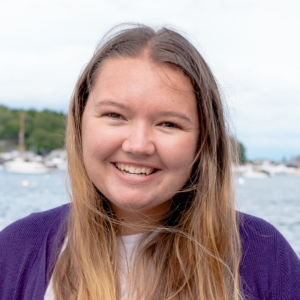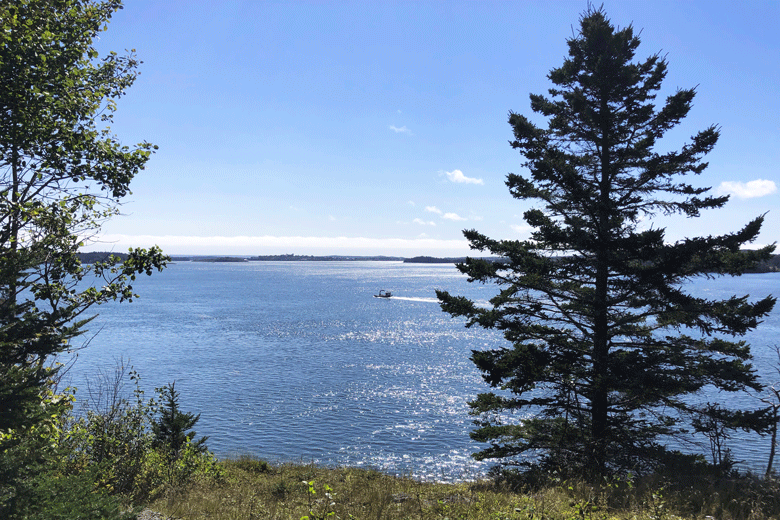Reflections is written by Island Fellows, recent college grads who do community service work on Maine islands and in coastal communities through the Island Institute, publisher of The Working Waterfront.
The trails at Shackford Head State Park in Eastport can be confusing. With stunning views of Cobscook Bay, the park is one of my favorite places to explore since moving to Maine.
I am no stranger to hiking, having explored local, state, and national parks all my life and, when I moved to Eastport, I was excited to learn about the beautiful park just minutes from my front door. Shackford’s trail system crisscrosses the peninsula, leading visitors through quiet groves and hidden beaches. At first glance, these trails seemed easy to follow but I found they can be complex to navigate.
When I first headed out, I relied only on the trail carved out by previous hikers to guide me. Soon the path became challenging to find and I began to get confused where I was heading. Was this the trail or was it a dried stream bed? Did the path really end here in the middle of some trees? I was unsure if I was going the right direction or if I had strayed off trail. Then out of the blue, it all became clear.
These local experts are the people who will know if what you are working on will be truly helpful…
Stripes of paint serve as trail markers to strategically map the trail as it traces the northern edge of the headlands. Sometimes on trees, other times on rocks, these flashes of paint help guide visitors along the trail as it winds along the coastline. Placed incrementally along the trail, these marks are confidence boosters and reassure hikers they are on the right path.

Community work can feel a lot like navigating the trails through Shackford. It can be easy to walk into a community and rely on previous experience to direct your actions. If a strategy has worked in one community, it seems logical that it will guide success in another. While previous experience can be a useful tool, it also can be dangerous when used as a rigid plan. Each community is unique and, just like hiking, if you don’t keep a careful watch, you can easily head in the wrong direction and wander off course.
My experience in community work is like being out on Shackford Head using the trail markers as a guide. At first the path seems clear, taking direction from those who have gone before. It’s easy to keep your head down and focus on the immediate next steps to propel you along the route. The progress you make, however, is only useful if you take in your surroundings and navigate the trail that you are on.
I have found that community members are essential to guiding your journey. They know their community intimately, have a deep understanding of its challenges, and a strong pride in the place they call home.
Like trail markers, it is important to seek out local stakeholders and be prepared to listen to their guidance. These local experts are the people who will know if what you are working on will be truly helpful for the community. They hold invaluable knowledge and the local context critical to navigating the issues at hand and avoiding obstacles that have caused others to stumble.
I am lucky to have found amazing community members to act as “trail markers” for my fellowship. Their guidance has already helped me learn so much about Eastport, while at the same time helping me to avoid some common pitfalls.
They’ve taught this California native how to avoid frozen pipes, when to be on the lookout for deer jumping across the road, and where the best beach is to comb for sea glass. More importantly, in sharing their lives and their experience, they are helping me serve the city to the best of my ability.
Just like the trail makers at Shackford Head, the people of Eastport are constant reminders to me to slow down and take the time to appreciate and better understand my surroundings.
Paige Atkinson works with the city of Eastport on renewable energy, energy efficiency, and senior housing. She grew up in California and graduated from the University of California, Santa Barbara in 2019 with a degree in environmental studies. After graduation, she joined the Peace Corps and served as an education volunteer in the Philippines until the COVID-19 evacuation.





